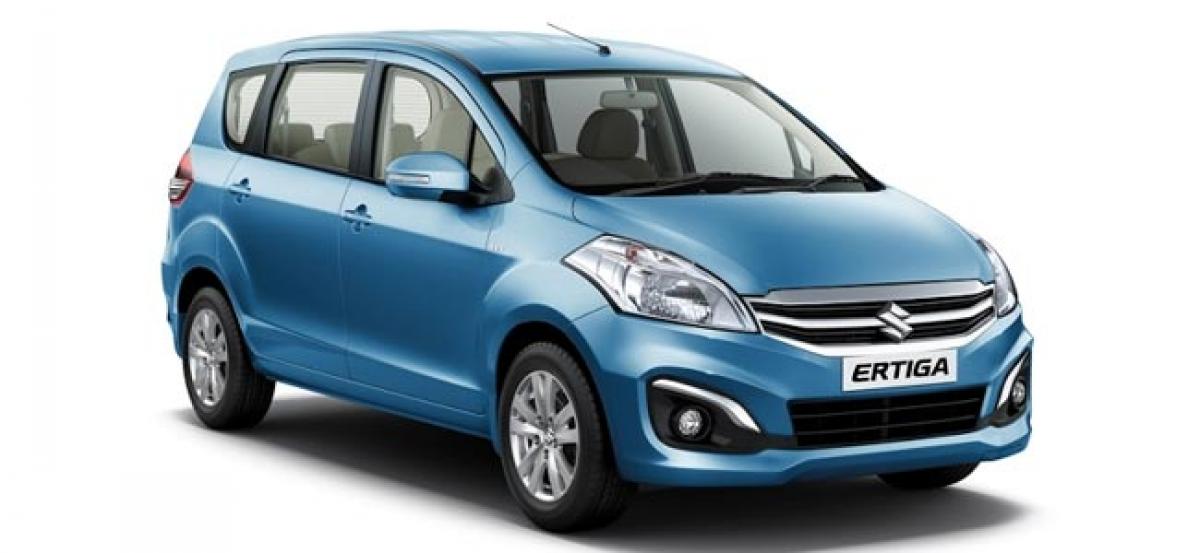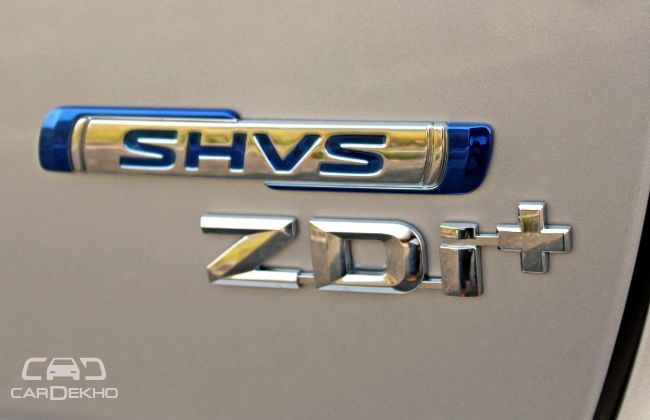Live
- Odisha holds successful mega investors roadshow in Singapore
- PGTI Tour: Top stars to fight for honours in Servo Masters Golf
- SC upholds termination of LIC employee for absenting himself without intimation
- ‘Stone me or shoot me, won’t spare anyone,’ says Anil Deshmukh after discharge
- Siddaramaiah, Shivakumar turning Karnataka into Pakistan: K’taka BJP
- Zimbabwe records 70 suspected cholera cases, one death amid new outbreak
- Babri demolition day: No Assembly proceedings in Bengal on Dec 6
- Typhoon Man-yi suspends ferries, submerges streets in China
- 2400 youths get jobs with big firms under NSDC scheme
- Govt prioritising road connectivity in remote areas: Himachal CM
Just In
Here’s Why Maruti Ciaz, Ertiga SHVS Prices May Go Up Soon


Realistically, the impact of Rs 13,000 is almost negligible on cars costing above the Rs 7 lakh (ex-showroom Delhi) mark. The SHVS-powered Ertiga MPV and the Ciaz sedan will still claim class-leading fuel efficiency
Government Revises Rule Book To Withdraw Incentives On Mild-Hybrid Cars, A Move That Will Likely Affect Maruti The Most

Soon after the Supreme Court’s decision to ban sale and registration of BS-III vehicles post March 31, 2017, FAME (Faster Adoption and Manufacturing of hybrid & Electric vehicles) India has gone ahead and revised its rule book. As per its new directive, effective April 1, 2017, manufacturers of vehicles with mild-hybrid tech will not attract any incentives. Now, only proper hybrids (which have an electric motor propelling the car), plug-in hybrids and pure electric vehicles will qualify for the incentives.

This development will directly affect two of the most important models in Maruti Suzuki’s lineup - the Ciaz and the Ertiga. Both the passenger cars are offered with optional SHVS (Smart Hybrid Vehicle by Suzuki) tech, or in other words, a mild-hybrid tech.
Nerd moment: A mild-hybrid vehicle has an electric motor but cannot propel the wheels on its own. It assists the normal, fuel-powered engine by using recovered energy (for instance, from braking) stored in a battery and helps save fuel.
The incentives from the government helped India’s largest carmaker keep an attractive price tag for a car that returned better fuel economy than the variants without the SHVS system. Both the cars received an incentive of Rs 13,000 from the government, which will hold true for all SHVS-powered cars sold on or before March 31, 2017.

Introduced on April 1, 2015, FAME India’s objective has been to support the market and manufacturing of hybrid/electric vehicles. Part of the National Electric Mobility Mission Plan (NEMMP), which is being administrated by the Heavy Industries Ministry, the FAME India scheme is bifurcated in four phases starting with technology development in phase one, demand creation, pilot projects and finally charging infrastructure. At first, the deadline of implementation and execution of phase one was slated for two years (FY 15-16 and FY 16-17). The last date was recently extended to September 30, 2017.

Realistically, the impact of Rs 13,000 is almost negligible on cars costing above the Rs 7 lakh (ex-showroom Delhi) mark. The SHVS-powered Ertiga MPV and the Ciaz sedan will still claim class-leading fuel efficiency figures (Ertiga Diesel - 24.52kmpl; Ciaz Diesel - 28.09kmpl), which alone should be enough to convince customers for a slightly inflated price tag as well. We were expecting Hyundai to inject a mild-hybrid tech in its upcoming Verna sedan for India. However, after this development, Hyundai might just rework its strategy to take on the segment leader Maruti Suzuki Ciaz.
Source: cardekho.com

© 2024 Hyderabad Media House Limited/The Hans India. All rights reserved. Powered by hocalwire.com






